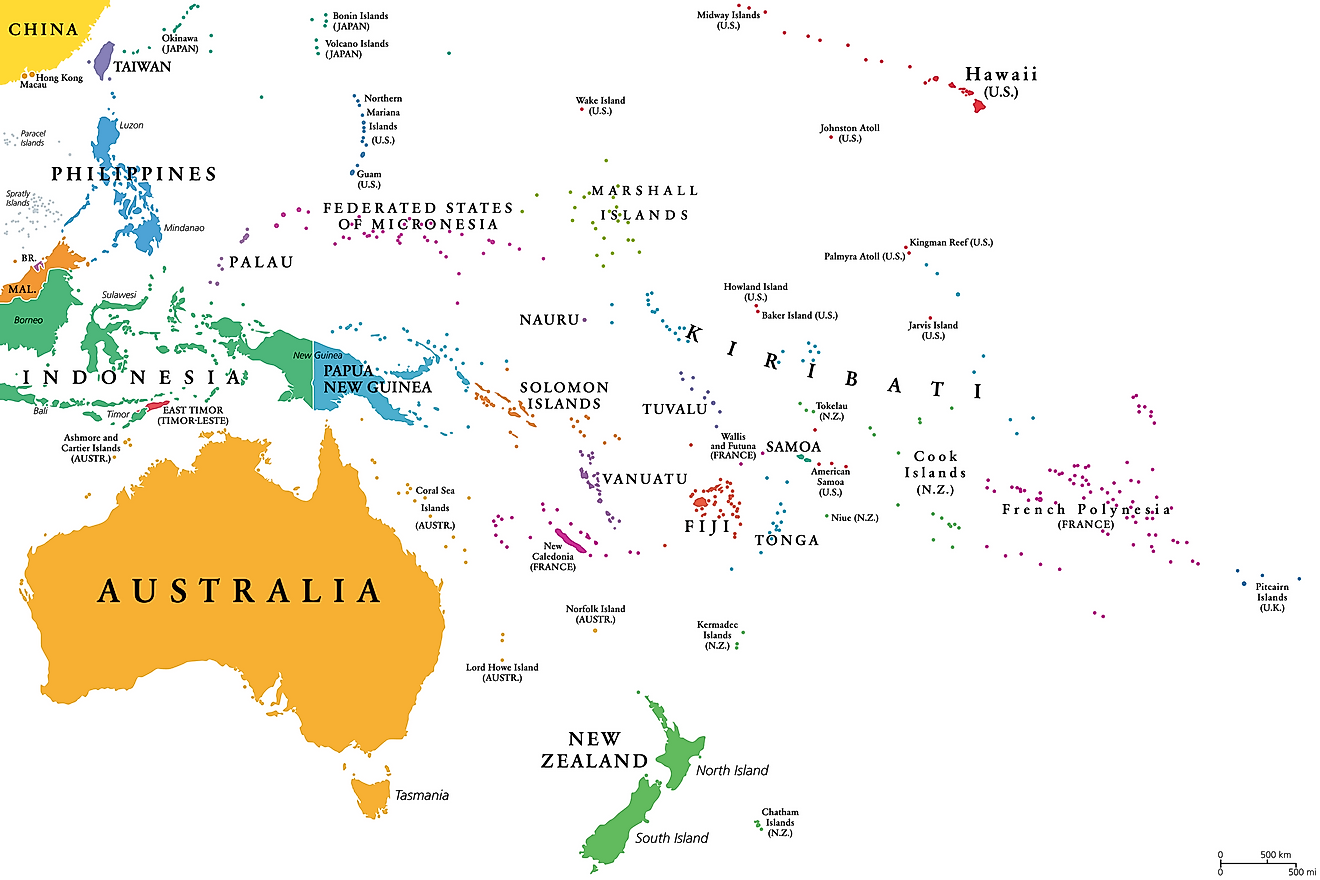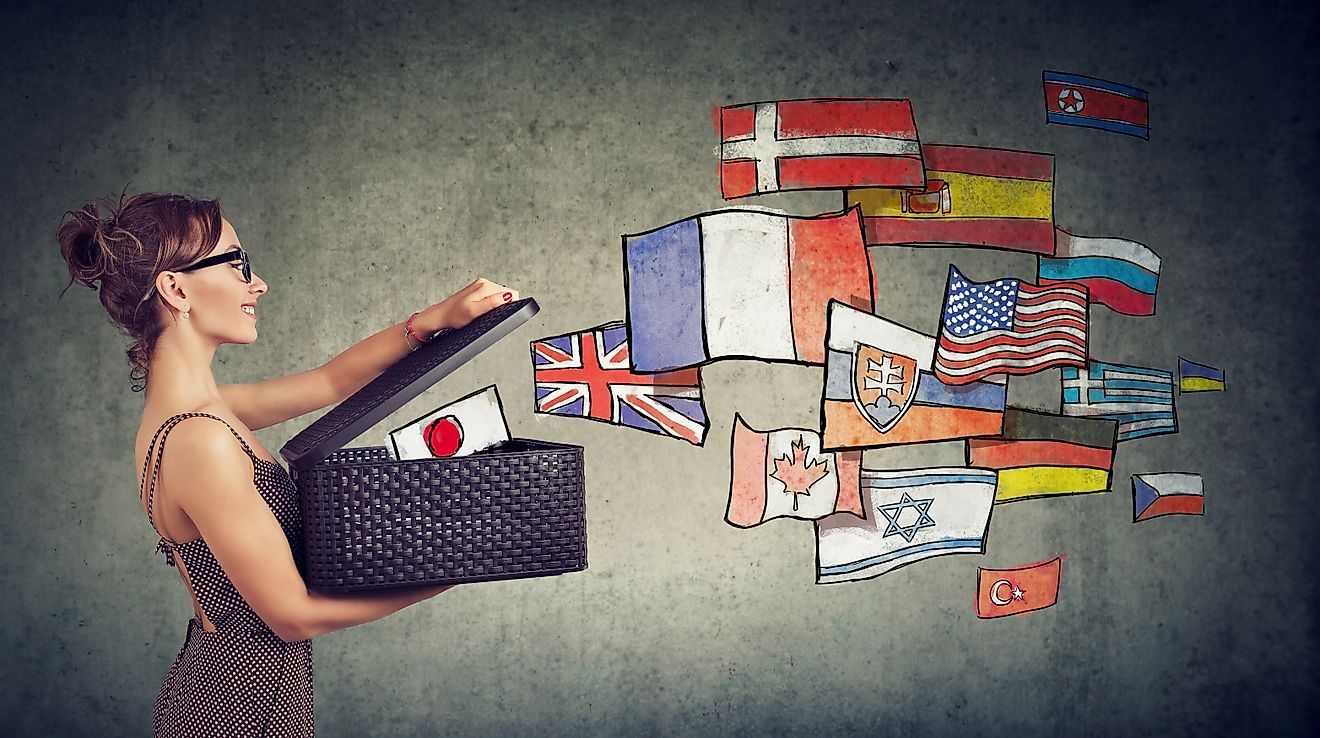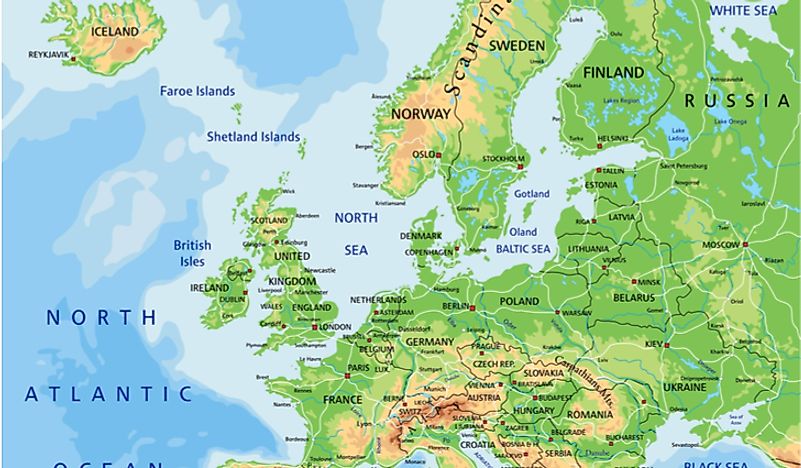Iceland
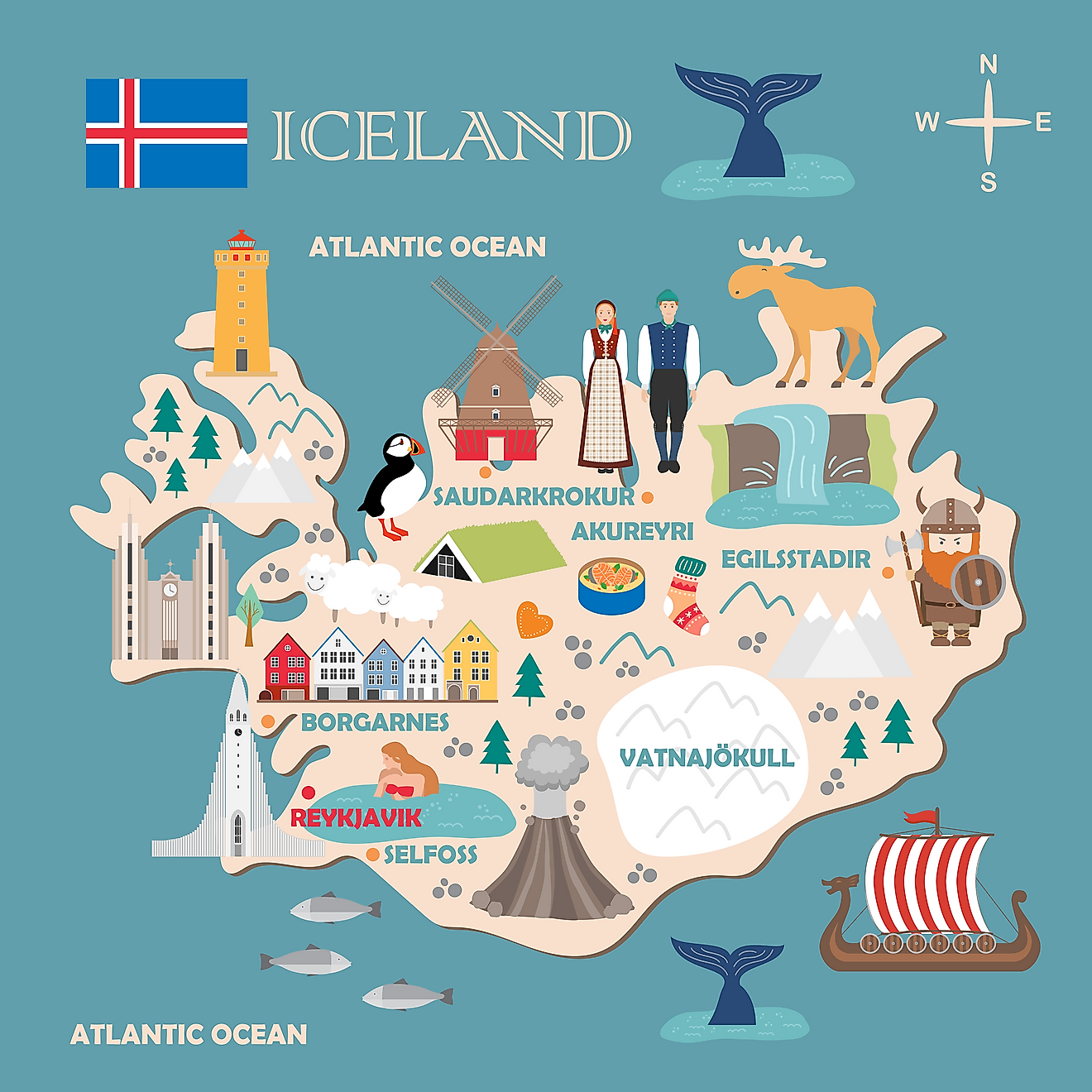
- Iceland is the least populous country in Europe.
- Iceland is Europe's second largest island after Great Britain.
- Iceland's capital, Reykjavik, is the northernmost national capital in the world.
- Iceland's parliament, the Althing, is the world's oldest parliament.
Iceland is a sparsely-populated island country in the North Atlantic Ocean. It is situated about half-way between North America and the European mainland, just above the Arctic Circle. Formerly a possession of Denmark, Iceland is a European country with unique geographic and geological features. The country is famous for its geo-thermal pools, volcanoes, and glaciers. It is also known for being one of the most peaceful countries in the world. In addition, Iceland has a rich culture and history.
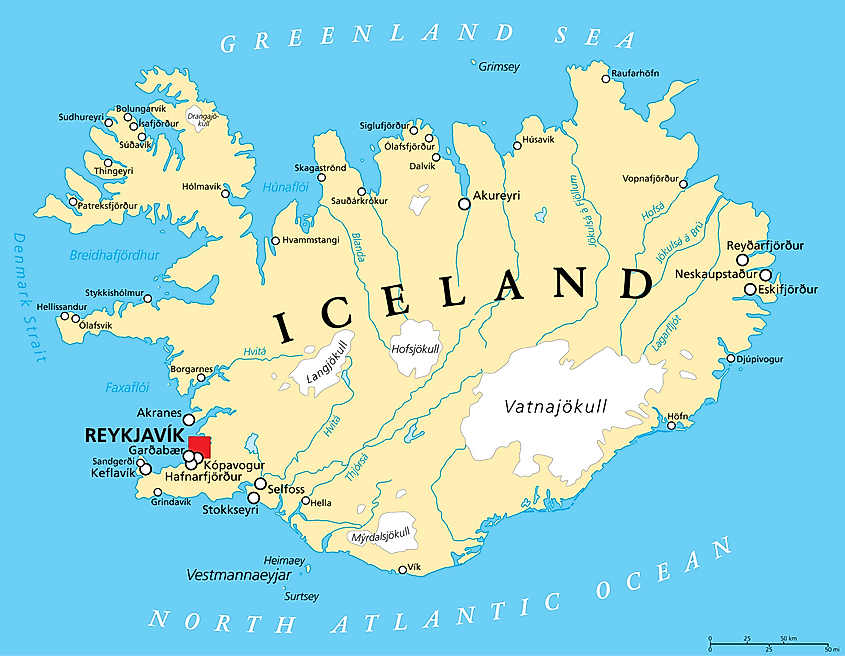
Contents:
- How Did Iceland Get Its Name?
- Geography And Climate
- Demographics
- Iceland's 10 Most Populous Cities/Towns
- Culture, Ethnicity, Language, And Religion
- Economy
- Politics And Government
- A Brief History Of Iceland
How Did Iceland Get Its Name?
Iceland’s name is misleading, because the country is actually quite green and fertile. So why is it called Iceland? The answer lies in the story of one of the first people to visit the island, a Viking named Hrafna-Floki. He arrived on the island in the 9th century. During his time on the island, he climbed a mountain and saw a fjord full of icebergs. This sight led him to call the island Iceland. The exploits of Hrafna-Floki are actually referenced in the popular TV show, Vikings. Another Viking named Eric the Red further solidified Iceland’s name when he was banished from the country and made his new home in what is now Greenland. He gave Greenland its name because he felt it would attract new settlers to the large island. Thus, Iceland and Greenland were both given names that are essentially misnomers, as Iceland is very green, while Greenland is covered in ice.
Geography And Climate
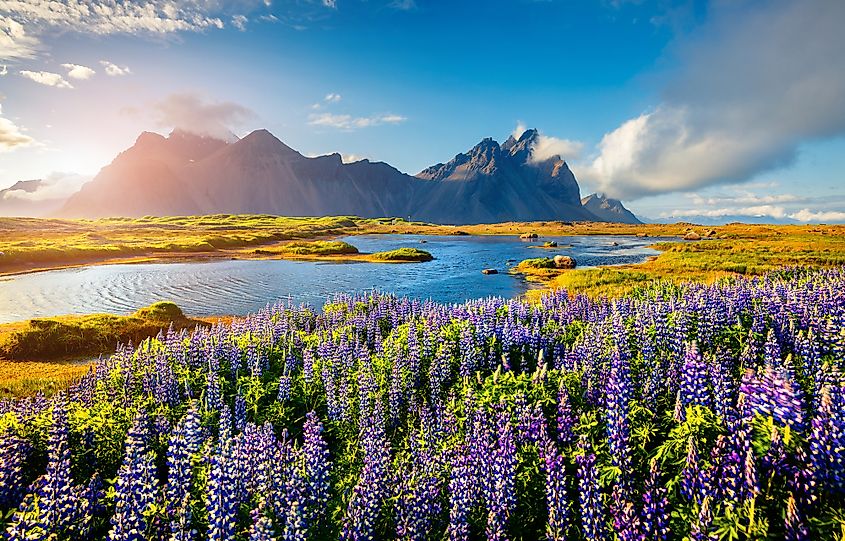
Iceland’s total land area is 103,000 sq. km, making it the second biggest island in Europe after Great Britain. Its land mass is among the youngest in the world, which is why the country is home to a lot of volcanic activity. The island was created by a large volcanic fissure in the Mid-Atlantic Ridge, where the Eurasian and American tectonic plates meet. About 11% of Iceland is covered by glaciers. The largest of these glaciers is called Vatnajökull, which is also the largest glacier in all of Europe. Much of Iceland’s terrain consists of plateaux, mountain peaks, and fertile lowlands. There are also many long, deep fjords. Other features of Iceland’s geography include waterfalls, geysers, volcanoes, black sand beaches, and steaming lava fields.

In spite of Iceland’s location just above the Arctic Circle, Iceland’s climate is fairly mild. This is due to the current from the Gulf Stream. The average temperature in January, the coldest month in Iceland, is 0 degrees Celsius. In July, the warmest month, the average temperature is 12 degrees Celsius. Hot weather is rare in Iceland, though it is commonly rainy and windy in the country.
Demographics

Iceland is the least populous country in Europe, with a population of approximately 343,000. This population lives on just 20% of the island. About a third of all Icelanders live in the country’s capital, Reykjavik, which is the northernmost national capital in the world.
Iceland's 10 Most Populous Cities/Towns
- Reykjavík - 128,793
- Kópavogur - 36,975
- Hafnarfjörður - 29,799
- Akureyri - 18,925
- Reykjanesbær - 18,920
- Garðabær - 16,299
- Mosfellsbær - 11,463
- Árborg - 9,485
- Akranes - 7,411
- Fjarðabyggð - 5,070
Culture, Ethnicity, Language, And Religion

As one of the Nordic countries, Iceland has strong cultural ties to the ancient Vikings. The Icelanders are very proud of their Viking heritage, and they are not shy about displaying it. Tour operators often include the word “Viking” in their names. Their museums have a strong emphasis on Viking heritage. Old Norse mythology and Viking folklore are also important parts of Iceland’s culture.
Iceland is very homogenous, as 93% of its people are Icelandic (a mixture of descendants of Norse and Celts comprise 81% of the population). The remaining 19% represents population with foreign background that includes persons having at least one parent who was born abroad and immigrants.

The national language, Icelandic, which is a Germanic language related to Norwegian and Danish, is largely unchanged from the Old Norse language that was spoken by Iceland’s first Viking settlers. But Icelanders pride themselves on being multilingual, so they also speak other languages. For instance, the majority of Icelanders speak fluent English. Many also speak Danish, as Iceland was once controlled by Denmark. In fact, in Iceland’s schools, children are required to study both English and one other Scandinavian language.

One other important aspect of Iceland’s culture is food. Some traditional foods include fermented shark, sour ram’s testicles, and cod tongues. Fresh fish, in particular, is a mainstay of the Icelandic diet. This includes cod, herring, arctic char, and tuna from salmon or Bluefin. Another mainstay of the Icelandic diet is lamb. It is no surprise, then, that sheep outnumber people in Iceland about three to one.

In terms of religion, Christianity is the dominant religion in Iceland, specifically Lutheranism. Most Icelanders are members of the Lutheran State Church. Other Icelanders belong to other Christian denominations such as Roman Catholicism. There are also some Icelanders who still practice a traditional Norse religion known as ásatrú.
Religious Affiliation Of Iceland
- Church of Iceland (Lutheran) - 62.28%
- Free Lutheran Church in Reykjavík - 2.72%
- Free Lutheran Church in Hafnarfjörður - 1.99%
- Independent Lutheran Congregation - 0.88%
- Catholic Church - 3.97%
- Other Christian denominations - 1.92%
- Heathenism - 1.40%
- Humanism - 1.11%
- Buddhism - 0.43%
- Islam - 0.39%
- Zuism - 0.23%
- Other and unspecified - 15.05%
- Unaffiliated - 7.57%
Economy
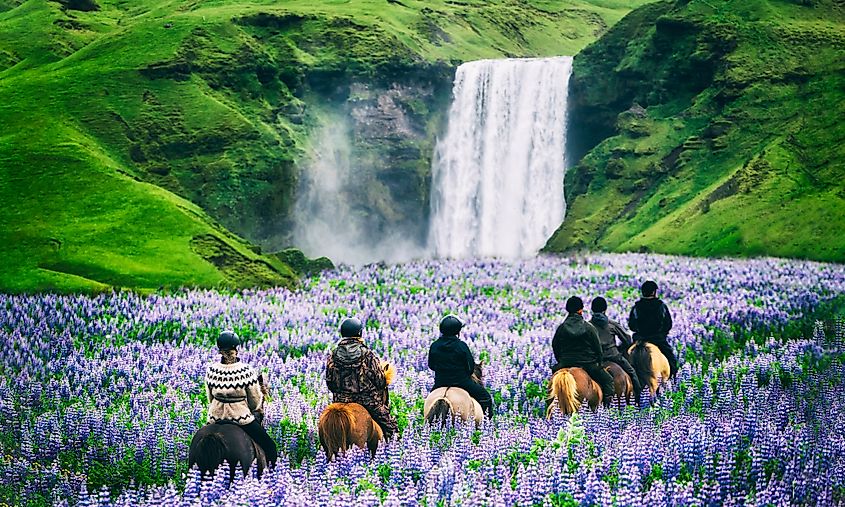
Iceland’s principle economic sectors are tourism, aluminum smelting, and fishing. Tourism and international travel, in particular, make up close to one fifth of Iceland’s GDP. Thus, like many other countries that rely on tourism, Iceland has been severely affected by the COVID-19 pandemic. Another important sector of Iceland’s economy is renewable energy, specifically geothermal energy, which is abundant in the country because of all its volcanic activity. Icelanders take pride in the fact that their economy does not expose them to a lot of harmful substances as it does in other advanced, industrialized countries. Another important aspect of the Icelandic economy is that compared to other advanced countries, there is much less income inequality. Iceland also has a strong welfare state.
Politics And Government
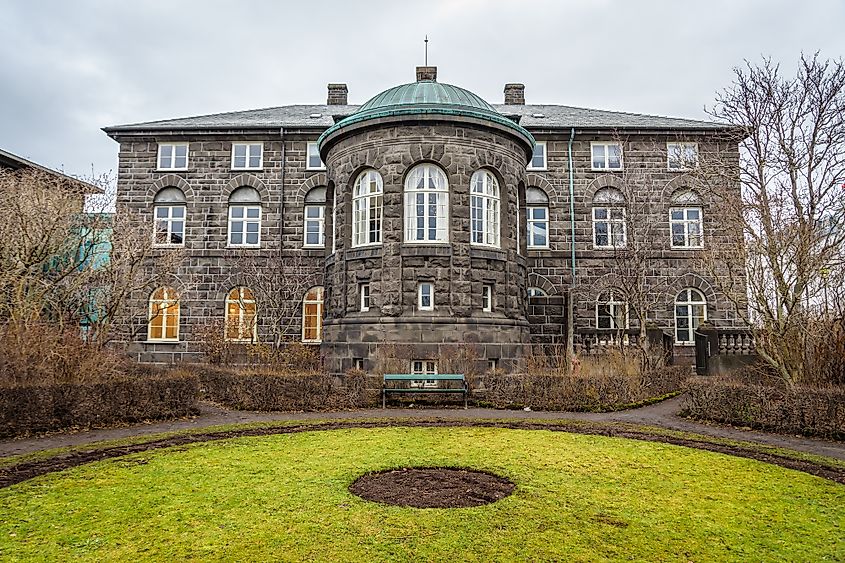
Iceland is a parliamentary democracy. In fact, Iceland’s parliament, the Althing, is the oldest parliament in the world. It was established in 930 CE. Today’s Althing, which serves as the country’s legislative branch, consists of 63 members, who are elected to terms of four years. Iceland’s head of state is the president, who is charged with selecting a prime minister. The prime minister and cabinet comprise the country’s executive branch. There is also a judicial branch that runs independently of the executive and legislative branches.
A Brief History Of Iceland

There is a book that documents the country’s earliest settlements known as the Landnámabók, which translates as the Book of Settlements. According to this book, the first people to settle in Iceland were Irish monks. Afterwards, Norsemen such as the aforementioned Hrafna-Flóki, sailed to the island. But credit for being the first to permanently settle Iceland, according to the Book of Settlements, belongs to a man named Ingólfur Arnarson, who settled in what is now the Icelandic capital city of Reykjavik in 874. The number of settlers grew rapidly in subsequent years, and by 930, an assembly, the Althing, was created to govern the rapidly-growing Icelandic society. One of the Althing’s earliest acts was to proclaim Christianity as the country’s official religion in the year 1000.
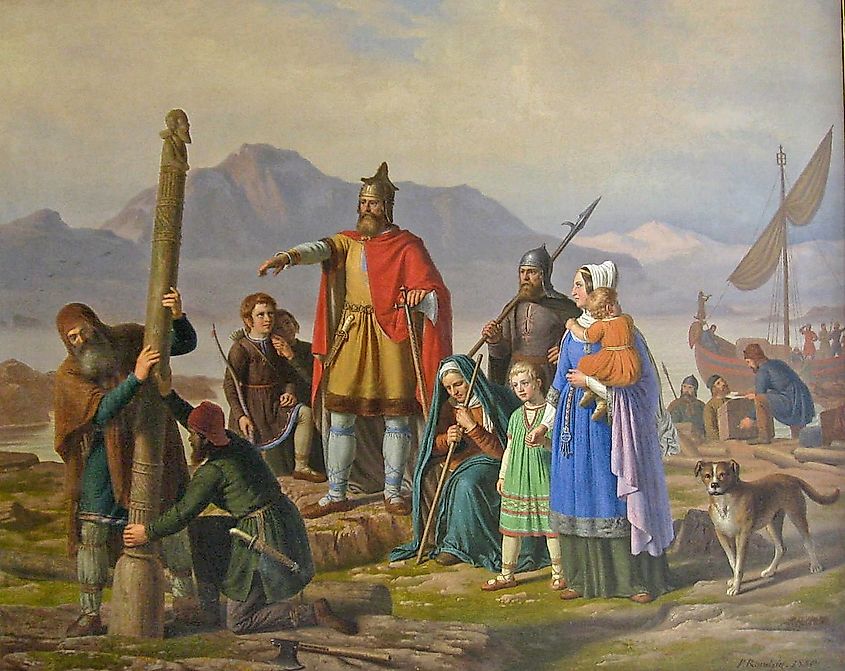
In the mid-13th century, the Icelanders recognized the King of Norway as their ruler. In 1380, however, Norway and Iceland entered a union under the rule of the Danish crown. Hence, Iceland became Danish territory. Under Danish rule, Lutheranism was imposed on Iceland. The 15th century saw the Black Plague kill about half of Iceland’s population.
In the 18th century, a massive volcanic eruption took place between June 1783 and February 1784. This eruption killed about 9000 Icelanders, and destroyed the vast majority of the country’s livestock, leading to a famine that killed up to a quarter of Iceland’s population. Those that did not perish from hunger were often killed by the extreme heat and noxious gases from the volcanic eruption.
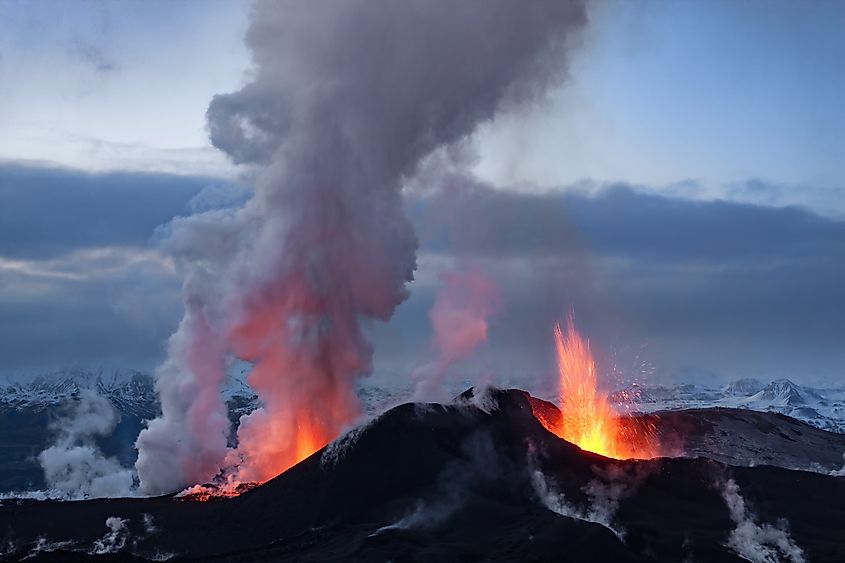
In 1874, Iceland was given limited autonomy by the Danish government. This autonomy was supplemented in 1904 by the establishment of home rule and rule by parliamentary majority. In 1918, Iceland achieved complete self-government as per a treaty with the Danish government that relegated the Danes to controlling foreign policy alone in regards to Iceland. This treaty came to an end in 1943. The next year, a referendum was held in Iceland asking voters if they wanted independence. A resounding 97% of voters voted in favor of independence. Thus, on June 17, 1944, the country became an independent republic. In the same year, Iceland also joined the defensive alliance known as NATO.
In 1951, a treaty was signed that committed the U.S. to defending Iceland for an undefined amount of time. Thus, the U.S. maintained a naval base in the country until 2006. The latter half of the 20th century saw steady growth in Iceland’s standard of living and economy. In the 1970s, Iceland began its economic integration with Europe, as it joined the European Free Trade Association (EFTA). In 1989, Vigdís Finnbogadóttir was elected Iceland’s president, making her the world’s first democratically elected female head of state.
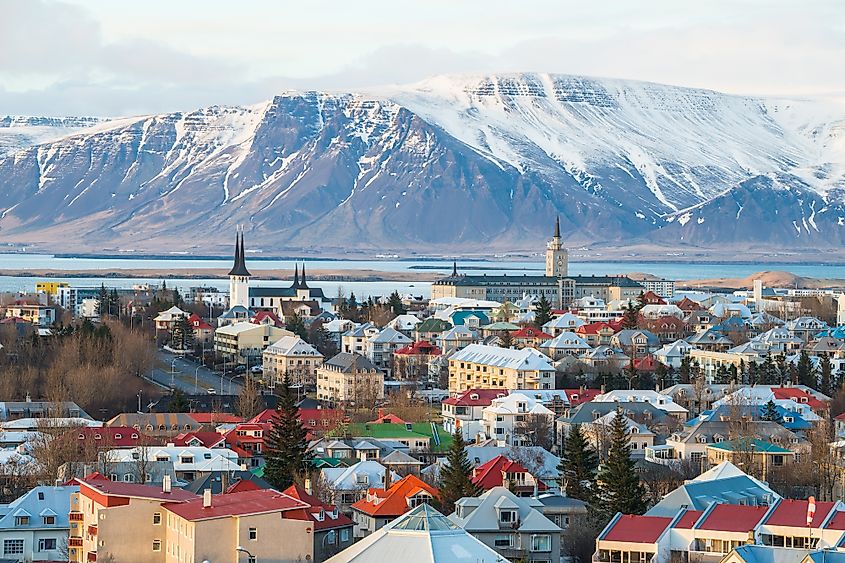
The 1990s saw steady growth in the economy, as well as economic diversification. In 1994, Iceland pursued further economic integration with Europe by joining the European Economic Area (EEA). Much of Iceland’s economic prosperity, however, came to a screeching halt in the 2008 financial crash, and it would take the country some time to recover. In 2009, Iceland formally applied for membership in the European Union (EU). But in 2015, the country withdrew its application for EU membership. Thus, Iceland is not a member of the EU today, though it is still party to several agreements that integrate it with the rest of Europe. These include being part of the aforementioned EFTA and EEA, as well as the Schengen area, in which goods and people move freely across international borders without the need for border and custom checks.









